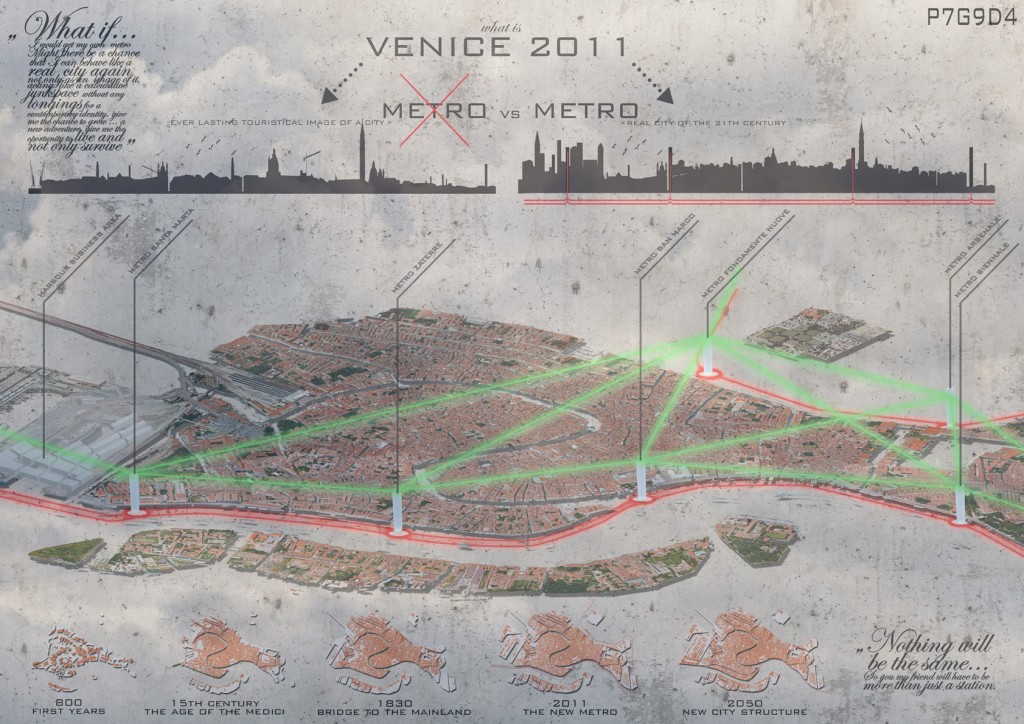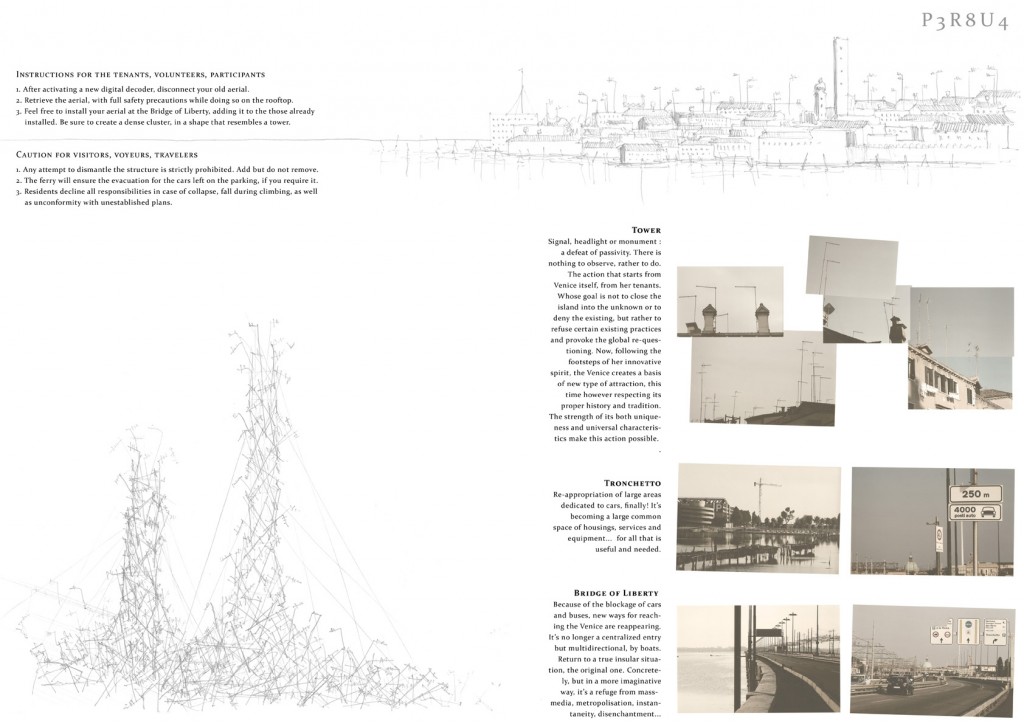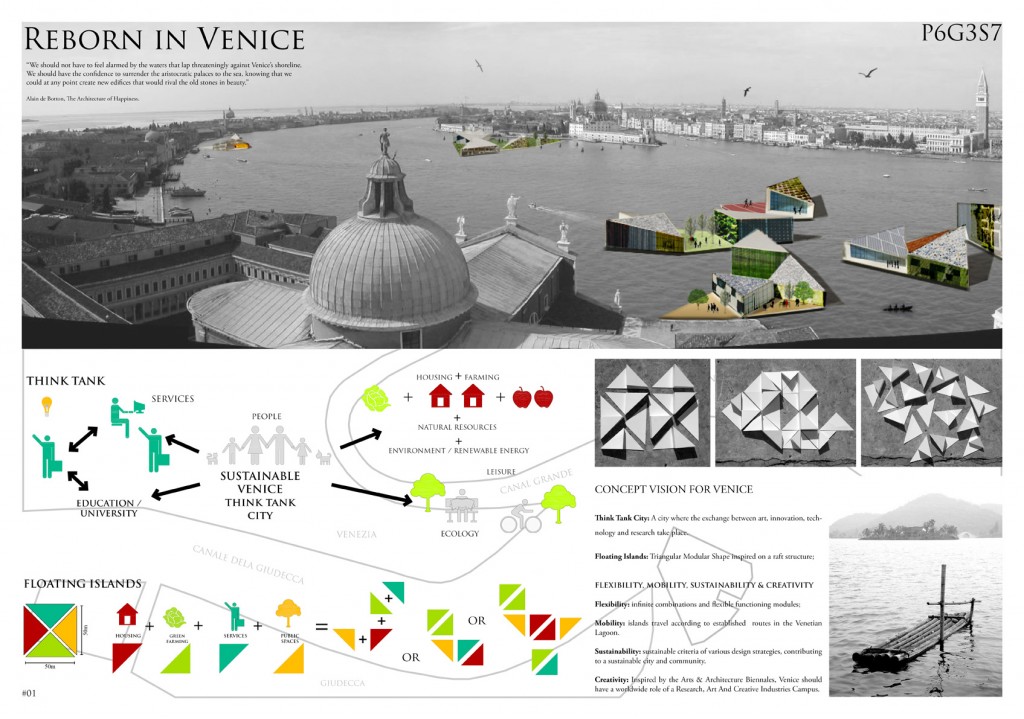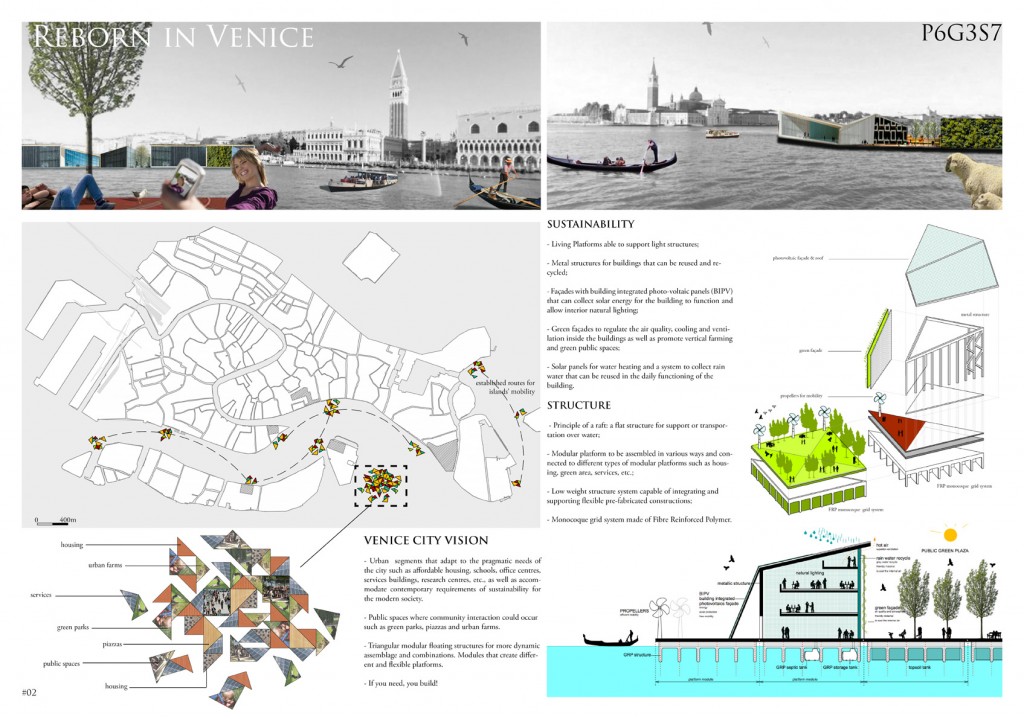Info:
Title: REBORN IN VENICE - Code: P6G3S7Contest: Venice / 2011
By: M. Paes Marques
Views: 3528 Likes: 0
Votes:
BJARKE INGELS6 NERI OXMAN8 ELENA MANFERDINI3 MARIA LUDOVICA TRAMONTIN5 BOSTJAN VUGA14.6
REBORN IN VENICE
REBORN IN VENICE Venice is known worldwide for its unique and morphological character, as a city with a particular way of transportation and where History is written in every corner. Although the Renaissance is associated with Florence there have been new historiography studies that defend Venice as the base of the modern era. Historians now argue that the vibrancy of early modern culture also resulted from the development of capitalism and markets, increased cross-cultural interaction, and the process of state building. When one views Renaissance under this light, Venice takes on a new importance in the early modern world.
Unfortunately Venice as other cities lack the capacity of fixing new and younger population owing this to its physical limitations as well as an economical development beyond tourism. Venice is slowly becoming a deserted city, populated solely with short-stay inhabitants where the public space is almost non existing and the green areas are mostly private.
THINK TANK CITY The Vision
We realised there is a need of a new Renaissance, in order to recover the lost buzz of the city of the XVI century. With this is mind the city vision that we propose demands Venice to be reborn as a place where cross cultural interaction happens and economy grows healthily. The densification of the city and the mode of transportation in the existing urban tissue dissuaded us of intervening in the upper and lower urban settlement, but focus instead on the in-between element: the water. Even though this element is widely explored in Venice we believe that this comes to our advantage. We decided to treat it as a canvas where science, arts & economy can take place and generate new urban segments.
Envisioning Venice of nowadays, we considered various factors. One of the main issues of the city is that it should attract permanent new inhabitants, not only students that will be for a temporary stay but young couples that would like to settle here. For this the city has to offer work conditions and life quality that can be promoted by the creation of a Think Tank city. Inspired by the Arts & Architecture Venice Biennales, we believe that the city has to assume its worldwide role of a Research, Art and Creative Industries Campus. Our aim would be a place where the exchange between art, innovation, technology and research would take place.
FLOATING ISLANDS The Vision
Unable to expand, we propose the conception of new Venetian ‘islands’ in the Lagoon. Like rafts, these triangular modular shape floating platforms would provide flexibility, mobility, sustainability and creativity in the city of Venice.
Flexibility: These urban segments would adapt to the pragmatic needs of the city such as affordable housing, schools, office centres, services buildings, research centres, etc., as well as accommodate contemporary requirements of sustainability for the modern society. They could be public spaces where community interaction could occur such as green parks, piazzas and urban farms or some day later being flexible structures, they could turn into service centres and research labs according to future needs. These modules clamp to each other and create different and flexible platforms.
These islands are, which presents more options of assembling and turning the combinations more dynamic..
Mobility: As floating rafts we propose their mobility. Inspired by the vaporetto, the islands should travel according to established routes in the Venetian Lagoon. Today the structures can be close to Piazza San Marco, tomorrow they are needed aside Giudecca.
Sustainability: These living platforms are based in sustainable and eco friendly principles. For the buildings we propose metal structures that can be reused and recycled. In the façades the building integrated photo-voltaic panels (BIPV) can collect solar energy for the building to function and allow natural lighting to come in, reducing energy consumption on lighting. Artificial lighting can be integrated in a building control system with light sensors that adjust the lighting levels according to daylight shifts.
In addition the green façades regulate the air quality, cooling and ventilation inside the buildings as well as promote vertical farming and green public spaces. The roofs sustain solar panels for water heating and a system to collect rain water that can be reused in the daily functioning of the building. The buildings were developed according to sustainable criteria where various design strategies were introduced, contributing to a sustainable city and community.
Structural Proposal: The idea of the platform is based on the principle of a raft, a flat structure for support or transportation over water. This platform being a module can be assembled in various ways and connected to different types of modular platforms such as housing, green area, services, etc., therefore the structural system has to be low weight and capable of integrating and supporting all these flexible pre-fabricated constructions.
Structurally we propose a monocoque grid system made of Fibre Reinforced Polymer. This material allows us to create a floating structure that compared to metal structures can have a reduction in weight up to 60%, an improved surface quality with aerodynamics characteristics as well as reduction in components by combining parts and forms into simpler molded shapes.
Flexibility, mobility, sustainability and creativity are the key words that sustain our vision. We believe that the proposal of these new floating islands can establish a new dialogue between the modern and the existing urban settlements in Venice, but recreating the natural eco-system and responding to sustainable issues. In addition by leaving Venice untouched we allow History to follow its course: “We should not have to feel alarmed by the waters that lap threateningly against Venice’s shoreline. We should have the confidence to surrender the aristocratic palaces to the sea, knowing that we could at any point create new edifices that would rival the old stones in beauty”
Alain de Botton, The Architecture of Happiness.
Info:
Title: REBORN IN VENICE
Time: 6 giugno 2011
Category: Venice
Views: 3528 Likes: 0
Tags: Architecture of Happiness , Business , Construction and Maintenance , Environment , Paes Marques , Piazza San Marco , Scripps Institution of Oceanography , Venetian Lagoon , Venice








